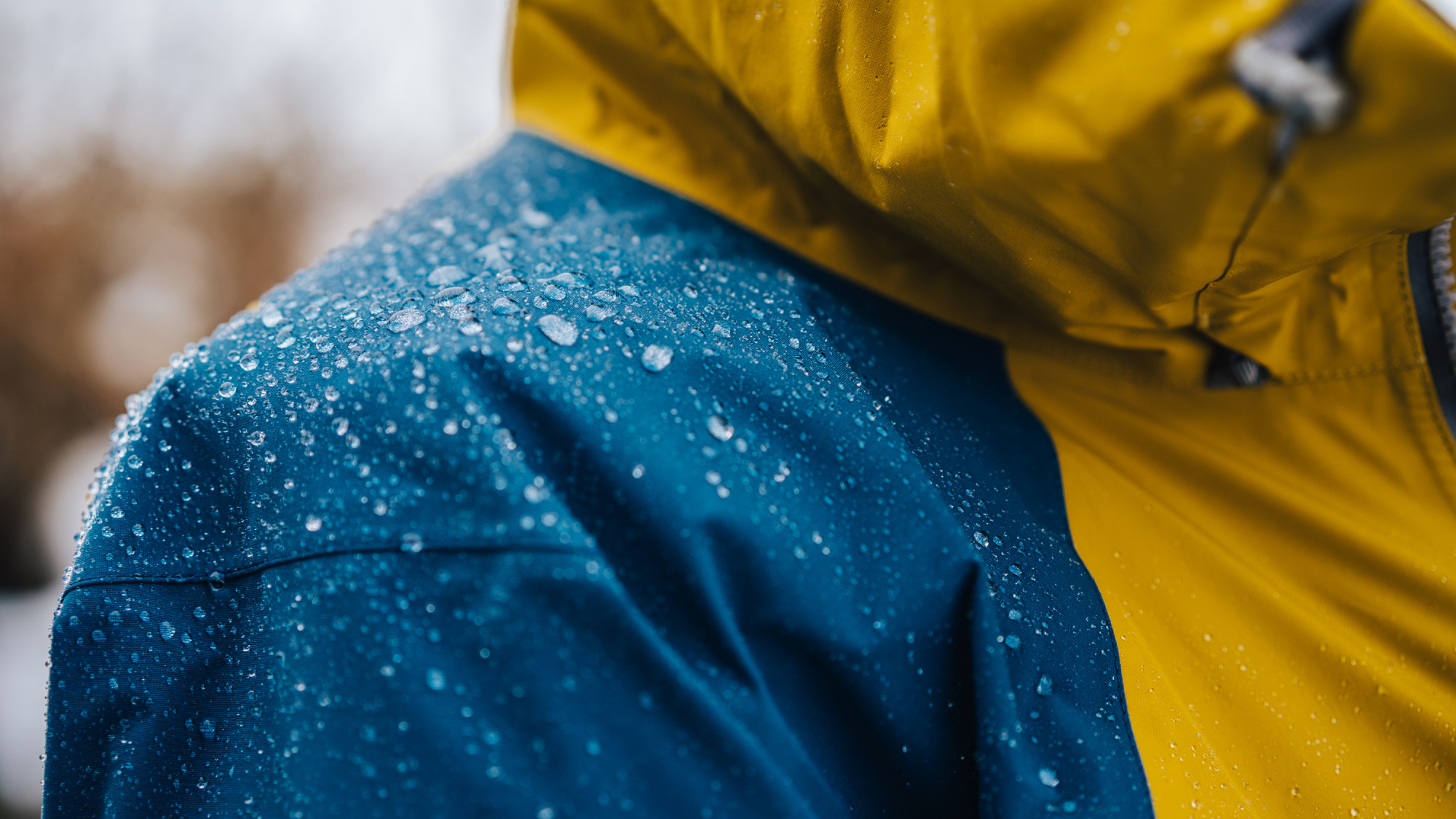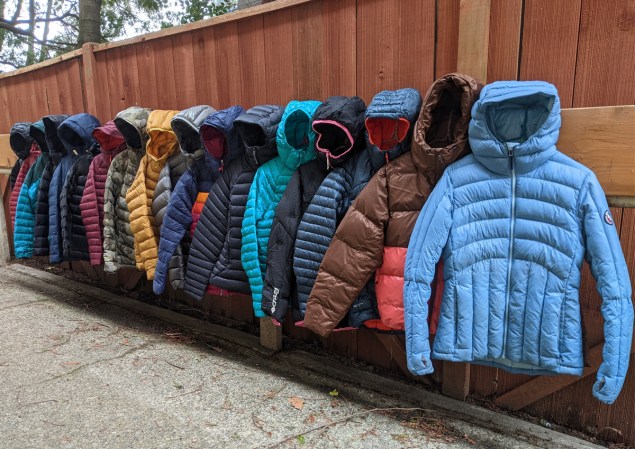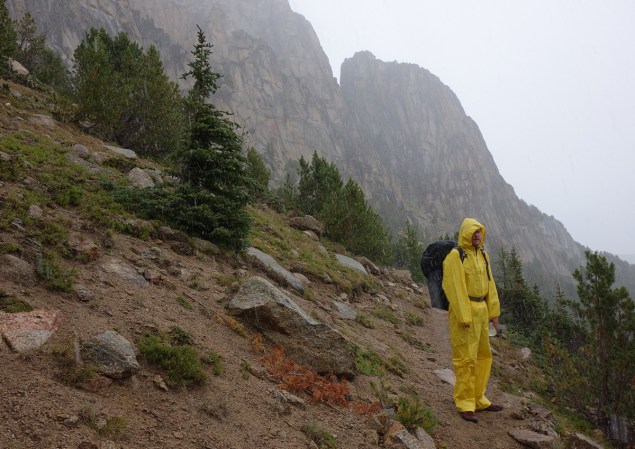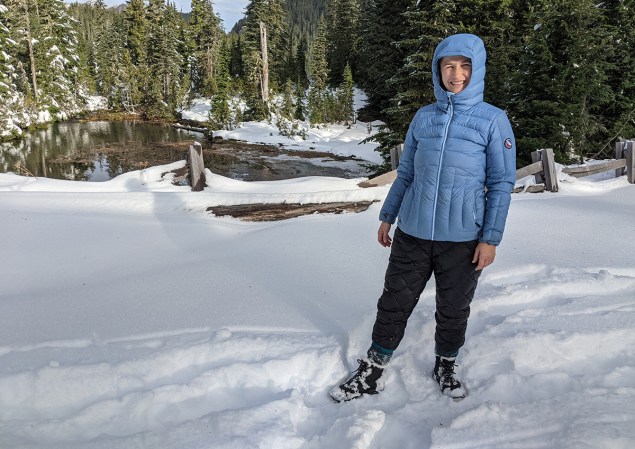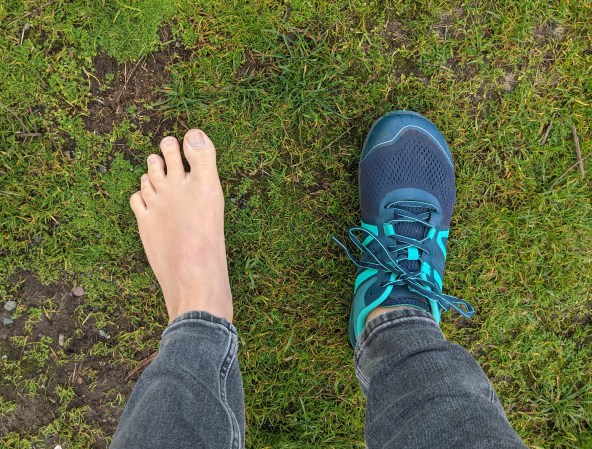We may earn revenue from the products available on this page and participate in affiliate programs. Learn More ›
Outdoor gear is in the midst of a sea change. A common family of chemicals used for waterproofing, stain resistance, and durability — PFAS — is being banned in textiles in California and in apparel in New York starting in 2025. As a result, outdoor gear companies are working hard to remove these chemicals from their products. With PFAS being utilized in DWR treatments on wind jackets, waterproof treatment on down, tent fabrics, rain jackets, and much more, this will require a major shift for the industry. But what is PFAS, and why is it being banned?
The reality is that the PFAS found in rain jackets is just the tip of the iceberg. PFAS have been in use for decades across a range of products and industries, including the outdoor industry. And the full impact of that toxic legacy is now turning up in our environment and in our bodies at an alarming rate.
What Is PFAS?
PFAS, short for perfluoroalkyl and polyfluoroalkyl substances, was originally developed by Dupont in 1938, and a version of it quickly found its way into any number of household goods under a familiar name: Teflon. Its waterproof and stain-resistant properties made it extremely popular. Today there are nearly 15,000 chemicals in the PFAS family, including PFOS (Perfluorooctane sulfonic acid) and PFOA (Perfluorooctanoic Acid), which are found in everything from rain jackets to food packaging to shampoo.
What makes these chemicals unique is the carbon and fluorine bonds in their atomic structure. Because carbon and fluorine bonds are very strong, they do not break down easily. For that reason, they are known as “forever chemicals.” They build up in the environment, and they build in the human body. Based on an analysis of survey data from the National Center for Health Statistics for the years 2011 to 2012, it is estimated that 97 percent of Americans have PFAS in their bloodstream.
Buildup of PFAS in the body can lead to cancer, developmental delays in children, and fertility issues. While it was once thought there might be some safe levels of some types of PFAS, the more research is done, the less this appears to be the case. It also seems that companies that made PFAS knew about its risks.
PFAS in Everyday Products
A lot of the coverage in outdoor media is currently focused on how legislation (particularly in California) is going to affect rain jacket quality, which makes sense given that many modern rain jackets (although not all) rely on PFAS for waterproofing. PFAS is found in the DWR; and it’s found in the waterproof membrane. Gear companies that have not already transitioned toward a PFAS-free chemistry for their outdoor apparel are scrambling to get there before California’s deadline.
But if you already own gear that contains PFAS, feel free to hang on to it. First off, it’s not the only thing you’ve got that contains PFAS. If your shirt (or your kid’s shirt) is advertising itself as “stain resistant,” then it probably utilizes PFAS. It’s in shampoo, nail polish, and toilet paper. Up until very recently, it was in carpets. It’s practically omnipresent inside your home. But more importantly, there is currently no indication that PFAS passes the skin barrier readily enough to pose a risk.
How PFAS Gets into the Bloodstream
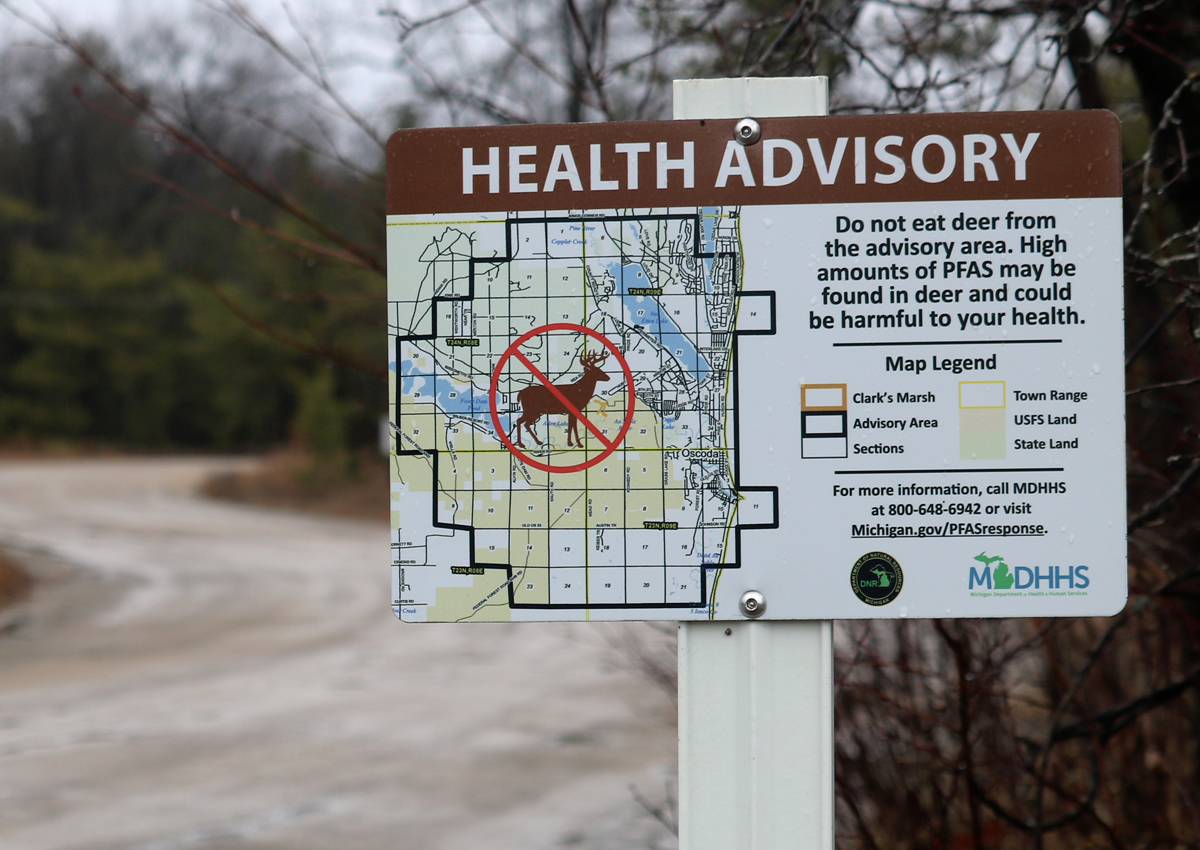
Photo by Drew YoungeDyke, National Wildlife Federation via AP
PFAS gets into your body when you ingest it, which means breathing, eating, or drinking. Here’s how that is currently happening.
For most Americans, the risk of breathing in PFAS is relatively minor. This is mainly an issue for individuals who work in chemical plants where PFAS is being manufactured. However, there may be risks to individuals who live near these factories. One exception to this is skiers and snowboarders, as there is risk of exposure when applying ski wax containing PFAS. Vermont has banned PFAS in ski wax and popular ski destinations, including Park City, Utah, have followed suit.
Accidentally munching on some PFAS is more of an issue. While the potential risk from teflon pans is reasonably well known at this point in time, we know less about how common PFAS is in food packaging. Studies have shown that eating out more often, as well as consuming certain high-risk products like tea and microwave popcorn, is associated with higher levels of PFAS in the bloodstream. As a result, much more legislation — including from California, Connecticut, Hawaii, Maine, Maryland, Minnesota, New York, Oregon, Rhode Island, Vermont, and Washington — is focused on removing PFAS from food packaging.
Unfortunately for hunters and anglers, eliminating processed foods from your diet will not necessarily protect you from PFAS exposure. In some states, deer have been found with high levels of PFAS in their system. So have freshwater fish.
PFAS Is in the Water
The biggest problem with PFAS is that it’s increasingly turning up in the water supply. There are a few reasons this is happening. PFAS leaching out of landfills, due to the sheer number of products in said landfills that contain PFAS. Another source of contamination is a type of firefighting foam called AFFF, which contains PFAS. This foam was very effective at fighting fires, but in places where it was used, including training grounds, it leached into the groundwater. This was a particular problem for the military, which contaminated the water with PFAS as a result of AFFF at more than 300 of their fire training sites. While some states have banned AFFF, it is still used by the military and municipal firefighters in some instances.
A third issue is that the manufacturing plants that produce PFAS have been polluting rivers and watersheds. Dupont and the state of Ohio have already reached a settlement for $110 million dollars to clean up the PFOA that Dupont dumped into the Ohio River. Dupont’s subsidiary, Chemors, is currently embroiled in litigation over contamination in Cape Fear River in North Carolina. And the outdoor industry proper is a part of this problem, too. Gore (of Gore-tex notoriety) is currently dealing with its own lawsuit as a result of air and groundwater PFAS contamination to the community near their Cherry Hill, Maryland, plant.
Protecting Yourself and Your Family
If you’re concerned about PFAS exposure, your first step should be to check out what PFAS testing has been done on your local water supply. As of 2022, the EPA’s recommendation for PFOS and PFOA (two of the most common PFAS chemicals) in drinking water is 0.04 ppt (parts per trillion). If your well or municipality’s water source turns out to be affected, you can reduce your exposure by changing the water you use for cooking and drinking. Be judicious about switching to bottled water, however, as the water sources used by some bottled water companies are also contaminated by PFAS. A better choice is to get a filter that is regulated to NSF/ANSI 53-2022 standards, like Epic Water Filters.
Read Next: The Best Filtered Water Bottles
But What About My Rain Gear?
First off, it’s worth noting that it’s not just rain gear that is being affected by this upcoming legislation. California’s Assembly Bill No. 1817 covers all apparel as well as textiles, such as backpacks. But the biggest change will be to rain gear, particularly rain gear that utilizes a Gore-tex membrane. While Gore-tex came out with a PFAS-free membrane in 2021, it is expected that the rest of their line will not be permissible under the upcoming law. (We reached out to Gore for this story, but did not hear back in time for publication.)
Outdoor enthusiasts are likely to be split on the issue of their rain gear. Some may be wondering if they need to wait until the ban goes into effect in 2025 to start purchasing PFAS-free gear. The answer is, no. If you’re looking to purchase a rain jacket that is free from PFAS today, you have a few options, including Patagonia’s Boulder Fork, Cotopaxi’s Ceilo series, or Fjallraven’s Keb Eco Shell. If you have an existing jacket that you are interested in re-upping the waterproofing on, you can also purchase PFAS-free technical washes, like those from Nikwax.
Other companies are working on getting their apparel lines up to date with these new regulations in time for the deadline at the end of this year. Companies like Forloh fall into this category. This is especially tricky when PFAS is being used for component parts — in my test of the best down jackets earlier this year, several companies told me that their jackets were PFAS free with the exception of the paint on the zipper.
Listen to Learn More: Forever Chemicals
But others may be concerned that great rain jackets are simply being regulated out of existence. First, there is a temporary exemption in both New York and California’s laws, for “severe wet conditions.” The law is specific that “hiking, camping, skiing, climbing, bicycling, and fishing” are not considered “severe wet conditions.” As examples of activities where severe wet conditions might be encountered, it gives “offshore fishing, offshore sailing, whitewater kayaking, and mountaineering.” When queried, both Stone Glacier and Kuiu stated that certain products in their lineup would fall under this latter category. But even this reprieve for “severe wet conditions” is limited to three years, with complete bans coming into effect in 2028.
I think there is no question that consumers are going to see a difference in how gear that is PFAS-free performs, especially as it pertains to how long waterproofing lasts without retreatment. But how big of a difference it will be and the extent to which typical outdoor users will be impacted remains to be seen. OL plans to run a long-term test of current for-sale jackets containing PFAS in both the waterproof membrane and the DWR finish. We’ll compare this against current best-in-class PFAS free chemistry to see how they compare. However, due to the importance of reducing PFAS in our environment, we will be prioritizing PFAS-free gear in our testing and review stories going forward.

